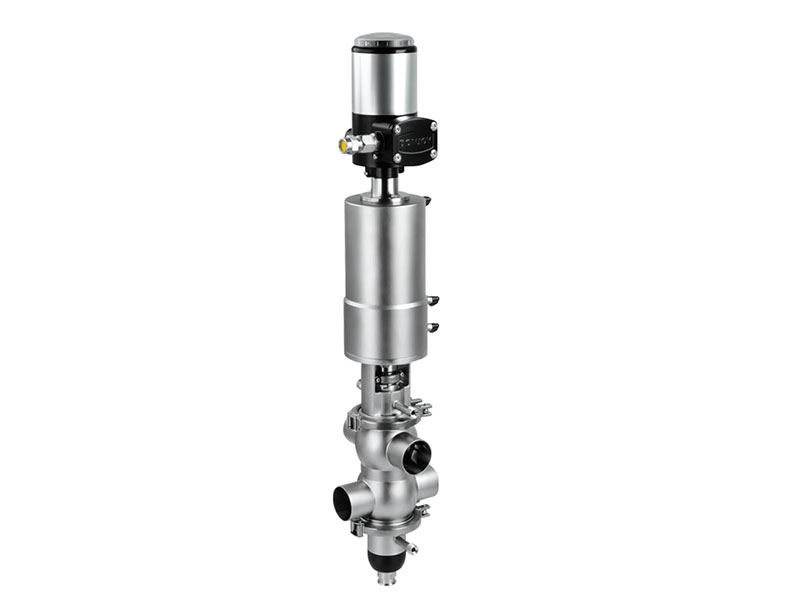 11 Fri 2024
11 Fri 2024
As an indispensable key component in the industrial field, valves have a long history of development. Since the beginning of the 20th century, valve technology has undergone continuous evolution and innovation. In the early days, simple mechanical valves were mainly used for basic fluid control. With the development of industry, the performance and functional requirements of valves have been increasing. Different eras have witnessed the emergence of various valve products, from traditional manual valves to increasingly automated electric and pneumatic valves. Each innovation is aimed at meeting the needs of more complex industrial processes. These valve products are not only continuously optimized in structure, but also have made significant progress in material selection, sealing performance, etc., to adapt to various harsh working environments and media requirements.
Valve Control have many significant characteristics. Its structural design is exquisite, and different types of valves have their own advantages. For example, some valves have the characteristics of large flow capacity, which can efficiently transport a large amount of media per unit time to ensure the smooth progress of the process. At the same time, the valve has a small imbalance, which makes it possible to more stably control the pressure and flow of the fluid during operation, reducing fluctuations and errors. In addition, operational stability is also one of its important advantages. Whether it is manually operated or in conjunction with an automated control system, the valve can be opened, closed and adjusted accurately and reliably, providing a solid guarantee for industrial production.
The flow characteristics of the valve are crucial for accurately controlling the flow of the medium. Valve Control valves have three flow characteristics: linear, equal percentage and parabolic. The linear flow characteristic means that there is a linear relationship between the valve opening and the flow rate. It has advantages in some occasions where the flow change is required to be relatively uniform, and can intuitively achieve linear flow regulation. The equal percentage flow characteristic means that as the valve opening increases, the relative change in flow rate increases by an equal percentage. This characteristic can better meet the system's requirements for flow regulation accuracy when the flow change range is large, making the entire regulation process more stable and accurate. The parabolic flow characteristic combines the characteristics of linear and equal percentage, and can provide a more ideal flow control effect under certain special conditions, providing a variety of choices for complex industrial processes.
Valve Controls play a vital role in the field of industrial automation process control. It can accurately adjust the process parameters such as flow, pressure, temperature, liquid level, etc. of the medium, thereby ensuring the stable operation and optimized control of the entire production process.
* Biopharmaceutical field: High-purity pump and valve control units ensure the strictness of the fluid control environment. Accurately adjust the flow and pressure of the medium to ensure the quality stability and safety in the drug production process.
* Semiconductor industry: High-precision control of valves is essential for the delivery and pressure regulation of ultra-pure media. Directly affects the quality and yield rate in the chip manufacturing process and improves production efficiency.
* New energy field: In solar and wind power generation devices, valves are responsible for the transmission and system control of the medium. Ensure the efficiency and reliability of the energy production process and support the development of renewable energy.
* Food and beverage industry: The hygienic design and precise control of valves ensure the quality of products and meet hygiene standards. In the production process of beverages and alcoholic beverages, maintain the safety and stability of fluid transportation.
* Fine Chemical Industry: The corrosion resistance and flow accuracy of valves are extremely high, meeting stringent production requirements. Support the refinement and high-quality development of chemical production and enhance product competitiveness.
The DONJOY brand was founded in 1993 and has been focusing on the research and development of high-purity pumps, valve control units, automatic control regulating valves, aseptic valves, pipeline and container safety control technology, container and tank cleaning technology, pipeline and container lighting technology, ASME BPE pipe fittings, aseptic pipe fittings and high-clean pipe joints. DONJOY's highly professional products and technologies are widely used in many industrial fields such as biopharmaceuticals, semiconductors, new energy, food, beverages, alcohol, fine chemicals, etc. With its many years of technical accumulation and innovative spirit, DONJOY has established a good reputation in the valve industry. Its products are known for their high quality, high performance and high reliability, and continue to meet the growing stringent requirements of various industries for valve products.

In summary, Valve Control valves have excellent performance in regulation performance and can achieve precise control of parameters such as flow and pressure according to different process requirements. It has high stability and can maintain reliable working conditions during long-term operation, reducing maintenance costs and downtime. Its wide range of applications enables it to play an important role in many industrial fields and provide strong support for the production and development of various industries. Whether in traditional industrial fields or emerging high-tech industries, Valve Control valves have become the first choice of users with their excellent quality and performance. With the continuous advancement of technology and the continuous changes in market demand, it is believed that Valve Control valves will continue to innovate and develop, bringing more value and contribution to the field of industrial automation control.
Why sanitary stainless steel butterfly valves corrosion resistant?